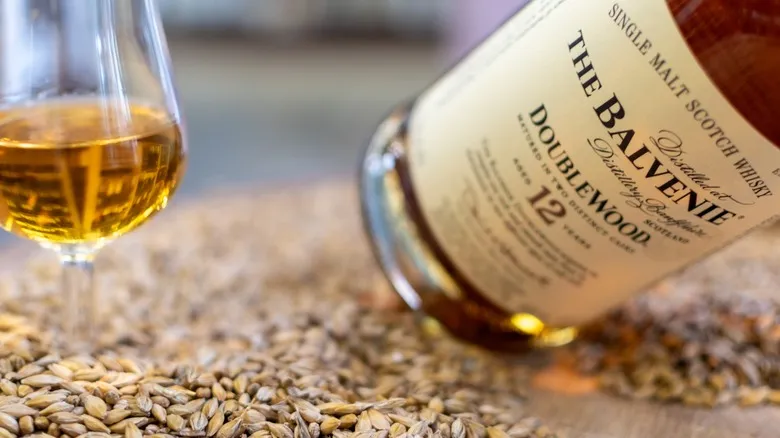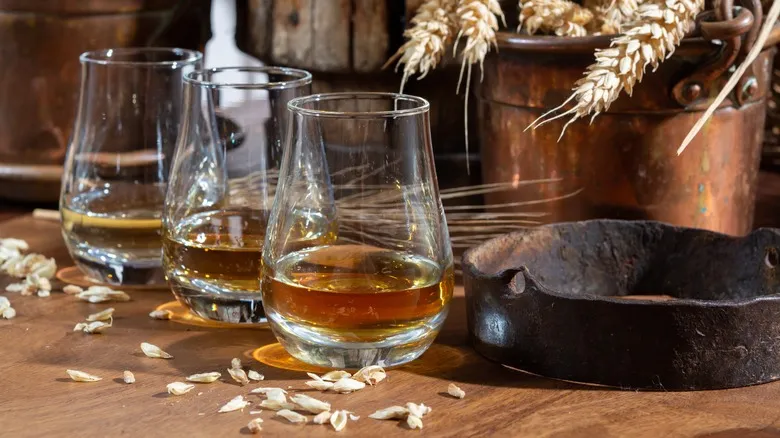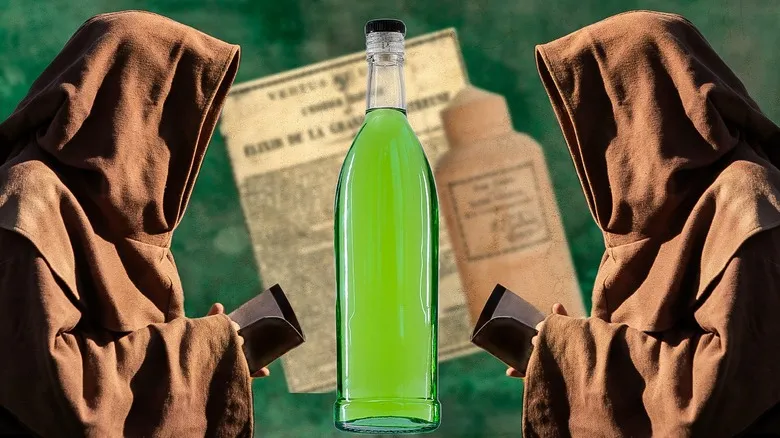Single malt Scotch employs exclusively malted barley

Scotch malt whisky is the most strictly regulated sub-style, requiring that the spirit is produced solely from a mash of malted barley and distilled in a pot still. When the entire production occurs at a single distillery, it is referred to as single malt; however, there are also variations that are blended from different producers. Initially, all Scotch was crafted in this manner, but its small-batch, low-yield, and inconsistent characteristics led to a decline in commercial success until a revival in the 1960s.
Today, it stands as one of the most esteemed types of whisky, with single malt bottles often among the most expensive. This reputation stems from how the style highlights its ingredients—locally sourced malts combine with local water and yeast to impart delightful regional characteristics. Unique production methods, such as the smoky peating process typical of Islay or the sherry casks used in Speyside, contribute to a wide array of exquisite flavors.
Single malt Scotch can range from smoky and rich to fruity, bright, and sweet—there is no singular flavor profile, except that it is generally bold. The intrigue lies in its variability, as different ingredients influence the flavor from batch to batch. This complexity is enhanced by producers' choices regarding harvest seasons and grain strains. Additionally, whisky makers must meticulously malt the grains through a detailed process. Consequently, the care and attention given to the ingredients profoundly impact the final spirit.
Other Scotch varieties incorporate more diversified grains

Malted barley is a wonderfully flavorful grain base, but it isn't the sole choice for Scotch. In the 19th century, producers began to experiment with a broader variety of cereals and adopted a more efficient continuous distillation process. This innovation allowed for a much wider selection of ingredients, including rye, corn, and wheat, with malting becoming an optional step. Generally, these additions resulted in a lighter flavor profile, introducing sweeter and smoother notes. At the same time, the new distillation technique increased the alcohol by volume (ABV) of the spirit.
Consequently, grain whiskies became the ideal foundation for blends, leading them to dominate the Scotch market. Bottles made from a combination of grains are easier to produce consistently across batches — a common sight in popular brands like Costco's Kirkland Brand Scotch. These blends come in various forms, such as blended Scotch, which combines malted barley with a grain mix, and blended grain Scotch, which consists of multiple grain whiskies. Although less common, single grain Scotches are also available, made from a mash bill distilled at a single location.
Since mash bills can vary in their cereal ratios, and distilled Scotch is blended in different proportions, this production method greatly expands the potential flavor profiles. As a result, predicting the taste based solely on ingredients can be challenging, making sampling the best approach. So, grab a delightful bottle and don’t forget to follow some essential storage tips to keep your whiskey in great condition.
Recommended

Only 2 Monks Know How To Make This Centuries-Old Liqueur

The Ingredients To Look For In A Great Canned Cocktail According To An Expert

The First Ever Cocktail Used An Unexpected Mixer

Don't Dismiss Canned Cocktails Over One Bad Experience
Next up

